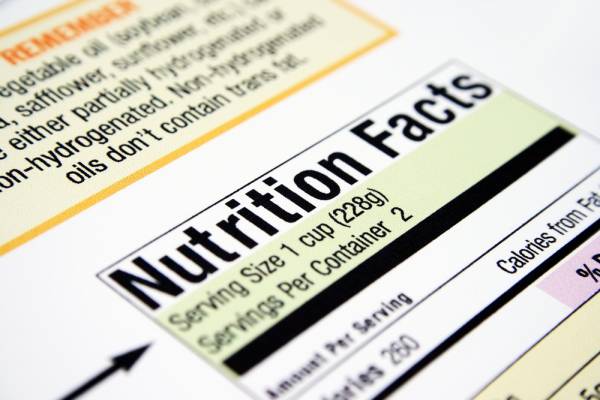Every year, millions of people swarm fitness facilities across the globe with one common goal in mind – to lose weight. And really, that’s the easy part. Then, you’ve got to keep it off.
We all know what to do to lose weight – eat healthy foods, eat less sugar, watch our calories, and exercise more. That is news to exactly no one. But to lose it and keep it off, you’re going to need to do more than count calories or follow fad diets. And you’re going to need to do the right kind of exercise.
Here are some tips to help you get lean and stay there:
The Reasons You Aren’t Losing Weight (or Keeping It Off)
You Aren’t Running
People who run don’t tend to be heavy and it’s no wonder why. Take a good look at calories burned by exercise and at the top of the list, next to scaling Mount Everest or competing in a boxing match, is plain-old running.
Running for one hour (assuming a 160lb person) burns 606 calories at a 5mph pace and 861 calories at a 8mph pace. That is equivalent to jumping rope for sixty minutes. Furthermore, the intensity at which running takes place can create an after-burn process called excess post-exercise oxygen consumption (EPOC). EPOC turns your body into a calorie-burning machine with an additional 24 to 36 hours of elevated calorie consumption.
“Take a good look at calories burned by exercise and at the top of the list, next to scaling Mount Everest or competing in a boxing match, is plain-old running.”
Studies corroborate running’s effectiveness. One study compared running with walking and the results are staggering. Runners with a BMI over 28 had 90% greater weight loss than those who walked.
TRY THESE: 20 Ways to Burn 500 Calories
As a trainer, I have heard “I hate running” countless times in my career. To which I say, “Too bad for you.” If your body has an aversion to impact from injury, then try the stair climber machine (657 calories in an hour). Otherwise, learn to like running and your waistline will thank you.

You Aren’t Going Anaerobic
On the subject of exercise that people don’t tend to like, anaerobic exercise is also near the top of the list. Anaerobic exercise can be summed up in one word – uncomfortable.
Doing sprints, jumps, and burpees in an anaerobic fashion (think high-intensity interval training) isn’t fun, but it most certainly is effective. The literal meaning of anaerobic is “without oxygen” and human beings don’t tend to enjoy things for long without oxygen. But anaerobic exercise burns lots of calories, and also it creates lots of, you guessed it, EPOC.
LEARN HOW: Go Anaerobic: What It Is and Why to Do It
You Aren’t Lifting Heavy
And did I mention EPOC? Studies show lifting heavy can lead to excess calorie burn for up to 36 hours post exercise. But in order to achieve this you need to lift heavy, and many people out there are not going heavy enough. Here’s a hint: if you can lift something fifteen to twenty times, then it isn’t heavy.
Bottom line, if you are going to lift to lose weight, then the weight you lift should be roughly 85% of the maximum you could lift. You should lift this weight for a range of around eight reps. If your goal is getting lean or staying that way, start lifting heavier.
You Don’t Look for Added Sugar in Your Foods
Think you’re doing your body good with that fat-free, berry-flavored Greek yogurt? You aren’t. Here’s an easy way to determine if your food has added sugar in it – if it comes in a package. Even things you think are “healthy” – energy bars, yogurts, jerky – can have lots of added sweeteners. Do your due diligence, scrutinize labels and ingredient lists, and avoid added sugars.
RELATED: Why Fitness Professionals Shouldn’t Eat (or Sell) Energy Bars

You Eat Out a Lot
I frequently ask my clients to grade themselves on nutrition. They love to show me their food journal with their egg whites for breakfast, salad for lunch, and fish and veggies for dinner. But then the weekend rolls around and it’s time to eat out.
“[I]f you are going to lift to lose weight, then the weight you lift should be roughly 85% of the maximum you could lift. You should lift this weight for a range of around eight reps.”
When eating out, planned meals turn in to unplanned meals. If you eat out frequently (more than three times per week), it’s much tougher to lose weight and keep it off. A recent study published in Public Health Nutrition found that dining out led to “significant increases in energy, sugar, saturated fat, and Na (salt).” Additionally, the study found that people who eat out at restaurants eat on average 200 calories more per day than those who eat at home.
RELATED: Calculate How Much You Burn and Avoid Unwanted Calories
200 calories might not sound like much, but extrapolate that from a daily to an annual basis and you’re talking about 73,000 calories or 21 pounds of fat. Eating out equals the wrong types of food and too much food in general. Eat out infrequently and you’ll be healthier, leaner, and richer.
You Don’t Have Support
Take an honest look at those you spend time with personally and professionally and see if there are changes you can make in your lifestyle. For example, instead of joining your coworkers who eat out every day, pack a healthy lunch. When it comes to family, changing habits can be tougher, so you will need to ask them for support. If all else fails, join support groups, find mentors, or hire the right professionals.
RELATED: Results: How to Live at Your Goal, Instead of Visit It
You Aren’t Addressing the Emotions Around Your Eating
For some years we’ve had a growing obesity epidemic in this country. I have seen solutions proposed from changing food labels, to instituting fat taxes, to federal programs to get kids exercising. I have never once heard any high-level political or industry dialogue around the emotional constructs behind being overweight or obese.

Addictions have a physical component, but they also have roots in our emotions. If you’re heavy, it might be time to look beyond exercise and diet and dig deeper into the whys behind your compulsive and emotional eating.
LEARN MORE: 4 Things Other Than Food You Might Be Craving
The Best Way to Lose Weight and Keep It Off
Losing weight and keeping it off is about facing discomforts. The best exercises for losing and keeping it off are hard and uncomfortable. Period. Similarly, there aren’t ways to literally or figuratively have your cake and eat it too.
“If you’re heavy, it might be time to look beyond exercise and diet and dig deeper into the whys behind your compulsive and emotional eating.”
Deep down, we all know the fat-free brownies and six-minute ab programs are lies. They are harmful in that they are diversions from the truth. There’s only one way to the mountaintop and it’s through the journey of introspection.
Find the ability to go running when you don’t feel like it. Find the way to pick up the apple instead of the junk food. Yes, keeping weight off is about metabolism, exercise, and the right nutrition. But mostly, it is about awareness of self and the willingness to get uncomfortable.
References:
1. Alex Hutchison, “Running V. Walking For Weight Loss,” Runners World, Dec 2012.
2. PT Williams, “Greater weight loss from running than walking during a 6.2-yr prospective follow-up,” Med Sci Sports Exerc, 45(4) (2013):706-13. doi: 10.1249/MSS.0b013e31827b0d0a.
3. “Exercise For Weight Loss: Calories Burned in 1 Hour,” MayoClinic, Dec 2011.
4. BE Ainsworth, et al., “2011 compendium of physical activities: A second update of codes and MET values,” Medicine & Science in Sports & Exercise. 43 (2011):1575.
5. Binh T. Nguyen and Lisa M. Powell, “The impact of restaurant consumption among US adults: effects on energy and nutrient intakes,” Public Health Nutrition, 17(11) (2014) 2445-2452.
6. Tara Parker-Pope, “Lifting Heavier Weights to Slim Down” New York Times, April 5, 2010.
Photos courtesy of Shutterstock.






